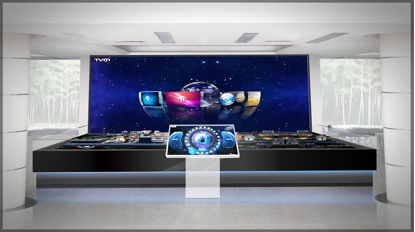Television technology has evolved immensely over the years. From those built-in cabinets to the thick and bulky sets that dominated homes in the past, the TV has become thinner, wider, bigger and clearer, thanks to bright minds that continue to enhance our viewing pleasure. It has also transcended from being a home staple to something that offices and industries use to convey their products and services. Walk into a company building and as soon as you enter the premises you will see a big TV or two, showing videos about the company and what it has to offer its customers.
Advertising
Digital advertising is the medium of advertising that companies use to reach their target markets. With the very high resolutions of televisions these days, offering their products and services through commercials has become more entertaining and less boring. You can see high-tech commercials being shown on giant TV screens luring potential customers to patronize their products and services, and these advertisements have been proven effective in enticing customers. TVs used for advertising are either mounted on a wall or placed in a TV kiosk.
Signage
Televisions are also used as signage. Signage painted by hand is slowly losing its appeal to people. Aside from the fact that it takes a long time to make compared to digital signage, they can also be costlier due to the manual labour that artists employ in the production of hand-painted signage. Digital signage uses LED lights to form letters and images that are displayed on screens. They can also interchange the lights to make them more eye-catching.
Entertainment
The entertainment factor of the television is still not lost. Many industries and offices install TV screens in lobbies and common areas to keep people from getting bored while they wait. They either show TV shows or their own commercials and other videos relating to their companies. In addition, some places play movies off Netflix in waiting rooms.
It must be noted that home and industrial televisions have a world of difference. For one, commercial TVs have a higher level of brightness, in order to clearly show their products and services even to those from afar. They are also made to withstand very long hours of operation. The bezels on the sides are also thinner for a more seamless and clearer display. The warranty is also different. Commercial TV warranties cover both commercial and consumer use, while consumer TV warranties only cover consumer use. And lastly, commercial televisions cost almost three times as much as home TVs, due to their size, resolution, and functionality.
Manufacturers of commercial TVs see to it that they offer the highest resolutions so that industrial customers are encouraged to use their products in conveying their offerings to their target customers. The competition is stiff, and industries benefit from the competition as they have a wider range of options.



 A Look At The Top Ways A Contract Packing Service Can Optimise Your Process Of Manufacturing
A Look At The Top Ways A Contract Packing Service Can Optimise Your Process Of Manufacturing